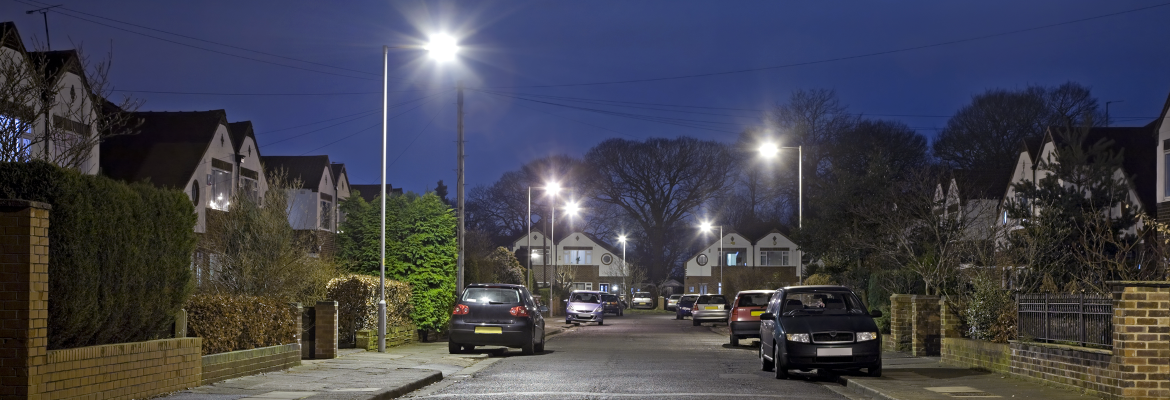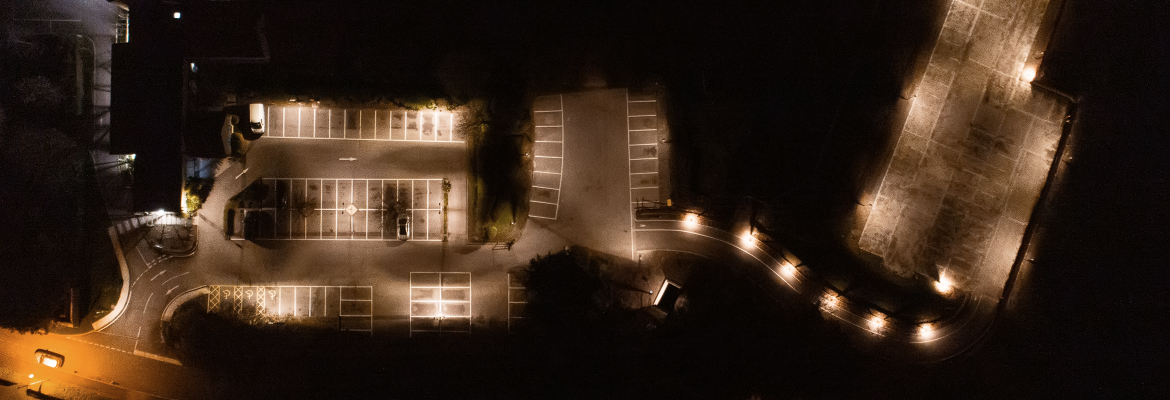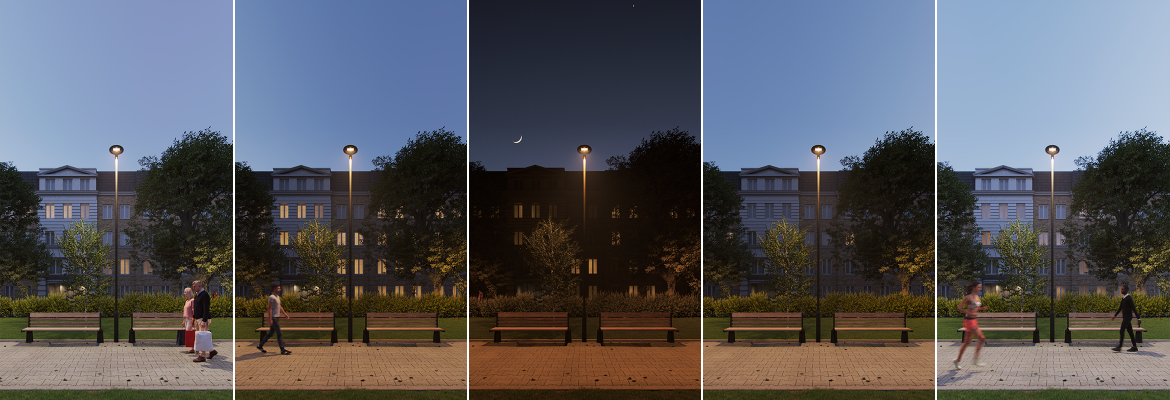Technology: helping to solve the challenges of urban lighting
January 2022, by Nick Johnson
DW Windsor operates internationally. For the best experience in your region, please select the region most applicable to you.
January 2022, by Nick Johnson
OPINION PIECE
The design of modern urban lighting schemes must balance a number of different considerations, from conforming to current lighting standards to ensuring public safety, as well as minimising light pollution and the impact on wildlife. In this article, we explain how, with the right technology and approach, lighting designers and specifiers can meet these objectives.
Night-time illumination is a necessity of modern life in many urban settings. Street lighting and other forms of illumination help improve safety by allowing pedestrians and drivers to identify hazards. Effective lighting in public areas also helps enhance locations and provide a sense of security at night. However, light pollution and the broader impact of light on our environment cannot be ignored.
It has become clear that excessive artificial light at night along with cooler colour temperatures can affect the natural behaviours of nocturnal species such as bats, in some cases causing a decline in their numbers. Recent studies have also indicated that incorrectly designed lighting is having a serious impact on crucial insect species.
Updated standards
To help address these issues, several new guides have recently been published which raise awareness of the impact of artificial light on wildlife and the wider nocturnal environment.

Poorly lit urban environments are having a negative impact on wildlife, with cooler colour temperatures being a contributing factor
In 2020, BS 5489, the standard for road lighting, was updated and among the new additions was a section on ecology. In particular, it references the Institution of Lighting Professionals’ Guidance Note 8 on bats and artificial lighting, stating that designers should consult an ecologist on the specification of lighting to reduce the negative effects.
More recently, the Society of Light and Lighting (SLL) published LG21, its first Lighting Guide dedicated to protecting the night-time environment. In addition to setting out the consequences of light pollution, the new guide explores the less visible impact that poorly designed lighting schemes can have on flora and fauna.
Whilst these guides focus mainly on design aspects, both acknowledge the role technology plays in supporting good design and the notion that not all luminaires are created equally.

At Dorothy House, Diamond+ Optics ensure light is only placed where it's needed, whilst PIR sensors are used to dim the luminaires
How technology can help
At DW Windsor, we are committed to developing the technologies and products that will allow professionals to design lighting schemes in a way that ensures the safety and comfort of people as well as protecting the natural world.
In 1990, we introduced Diamond Optic®, a highly flexible reflector system designed to provide light only where it’s needed. With the shift to LED technology, this system was updated to Diamond+, which offers up to 23 separate optical distributions for ultimate flexibility and precise lighting control.
Lighting controls also play an important role in managing light responsibly. For some urban lighting applications, it may be possible to utilise luminaires that include motion-based activation to make the illumination more dynamic. For example, our Kirium Wall product is ideal for car park and footpath illumination and has the option for passive infrared (PIR) sensors as well as control using integral CMS and photocells.

Daytona features Tunable White technology that can dynamically adjust the CCT of the light, transitioning from cooler to warmer white light
Embracing new technologies
Now, other technologies are emerging which help tackle the ongoing challenges faced by designers. One innovation that can help solve the issues of urban lighting is the Tunable White LED technology found in our new luminaire, Daytona®. The dynamic system allows light to be varied from cooler white light, which provides better visibility and safety, to warmer colour temperatures that help minimise the negative effects on wildlife and people.
This can be combined with advanced controls that allow changes in brightness to be scheduled throughout the night. For example, lighting designers can use these capabilities to establish illumination that begins at 4000K in the evening and transitions in stages to a warmer, softer 2700K light with reduced brightness overnight and then back again in the early morning. The system is fully programmable and is offered with two transition ranges: 4000K to 2700K and 3000K to 2200K, providing specifiers with a flexible solution for night-time illumination.
DW Windsor also offers luminaires that can be specified with SunLike™ LED technology, which mimics the spectral power distribution (SPD) of natural daylight. The technology works by reducing the blue light content within LEDs, which can be disruptive to humans and wildlife. SunLike also has the added advantage of higher colour rendering (up to CRI 95) for enhanced colour clarity and visual recognition.
To understand the challenges designers face when designing external schemes, we recently caught up with Jonathan Rush, Director (Lighting Design) at Hoare Lea.
“Undoubtedly, safety [of individuals and road users] is a primary consideration when we design an exterior lighting scheme, but what is the balance of this with biodiversity? I think it’s fair to say that collectively, not enough time from the industry is spent on considering all areas of ecology, and a greater awareness needs to be made to encourage engagement in this area.
“Biophilia and the innate human instinct to connect with nature has been found to support cognitive function and psychological wellbeing. It is in our DNA to be connected to the outside world; plant life, oceans, stars… yet, the ability to design a scheme whereby the interior and exterior illumination work in harmony to provide the optimum balance isn’t always a given. Invariably, there is a lack of freedom to consider the overall context and space of a lighting scheme; and designing something in isolation can make it disjointed.
“The idea of smart cities, though, brings greater social connections and social wellbeing - thoughtful, sophisticated schemes that balance all emotions and needs. In this scenario, we have the freedom to question, ‘Why do we need to light something? What is the best way of doing it?’ And having control of lighting or tunable lighting must be a central part of this. The ability to dim down lighting when it is not in use and understanding broad colour spectrum (when to change spectral power rather than Kelvin), will lead to a more inclusive scheme.”
In conclusion
Urban lighting is a complex issue as it must balance different human needs as well as protecting the natural world. Innovative solutions can help designers solve these challenges and deliver the right light at the right time.
Our new Daytona luminaire has been designed with these needs in mind. Daytona provides a modern functional lighting solution with Tunable White technology and a range of optics and control options that make it ideal for an array of urban applications.
Click here to find out more about Daytona.